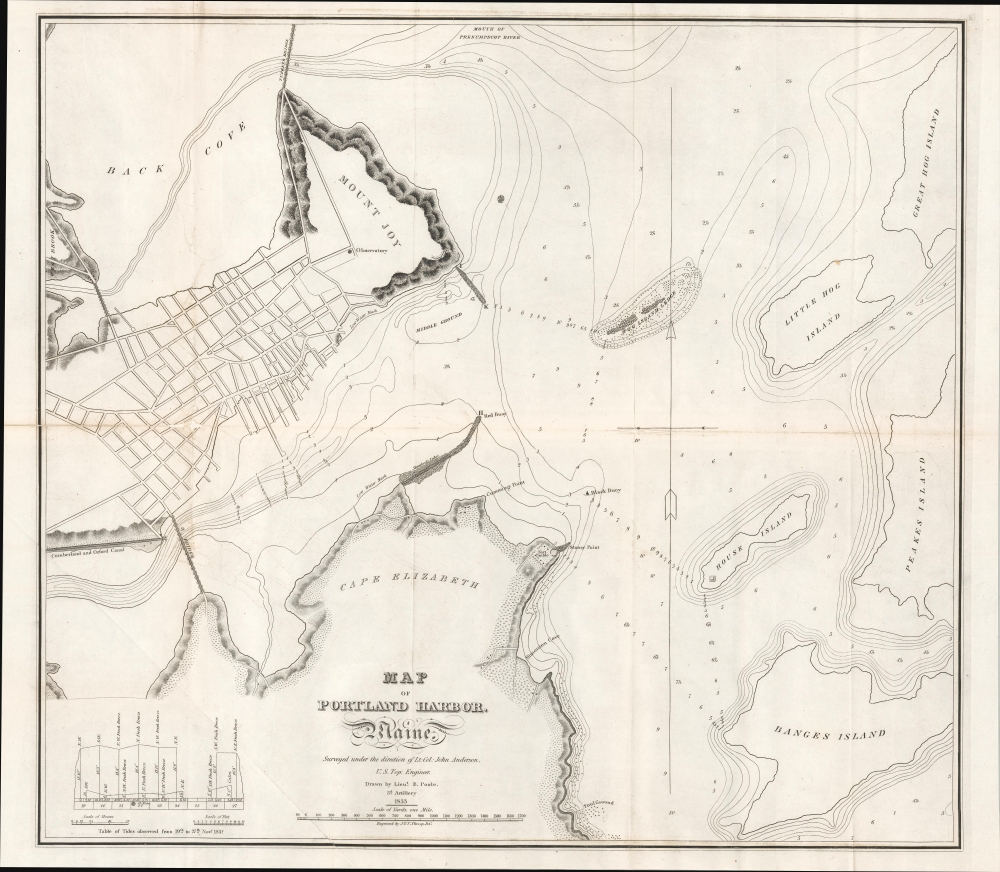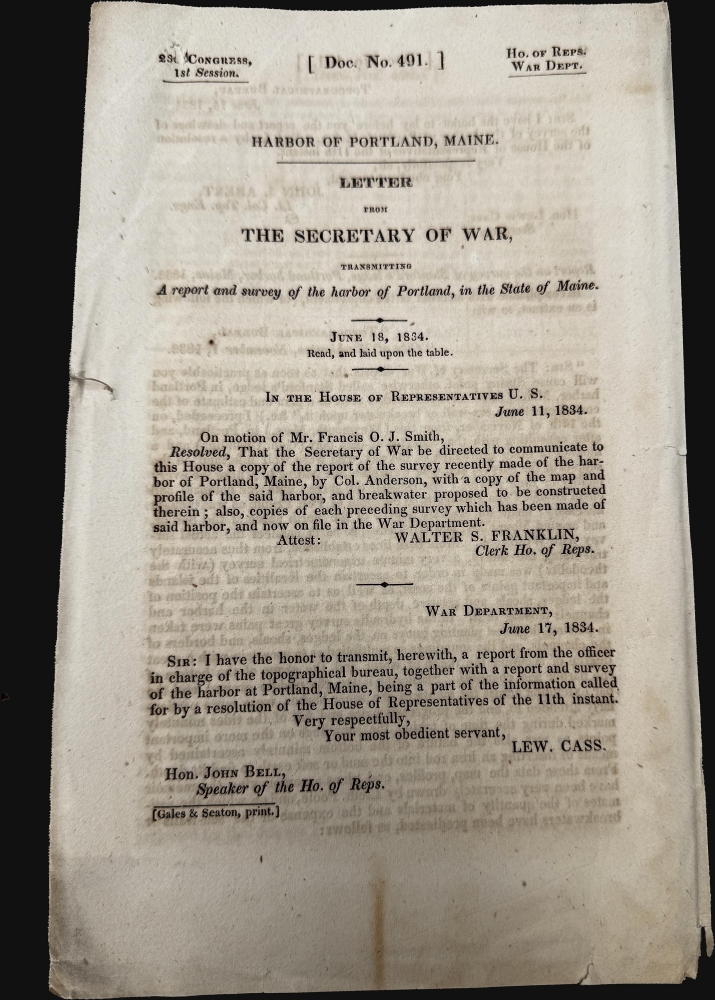Digital Image: 1833 Poole Nautical Chart of Portland Harbor, Maine
PortlandHarborMaine-poole-1833_d
Title
1833 (dated) 18.75 x 21.5 in (47.625 x 54.61 cm) 1 : 12240
Description
FOR THE ORIGINAL ANTIQUE MAP, WITH HISTORICAL ANALYSIS, CLICK HERE.
Digital Map Information
Geographicus maintains an archive of high-resolution rare map scans. We scan our maps at 300 DPI or higher, with newer images being 600 DPI, (either TIFF or JPEG, depending on when the scan was done) which is most cases in suitable for enlargement and printing.
Delivery
Once you purchase our digital scan service, you will receive a download link via email - usually within seconds. Digital orders are delivered as ZIP files, an industry standard file compression protocol that any computer should be able to unpack. Some of our files are very large, and can take some time to download. Most files are saved into your computer's 'Downloads' folder. All delivery is electronic. No physical product is shipped.
Credit and Scope of Use
You can use your digial image any way you want! Our digital images are unrestricted by copyright and can be used, modified, and published freely. The textual description that accompanies the original antique map is not included in the sale of digital images and remains protected by copyright. That said, we put significant care and effort into scanning and editing these maps, and we’d appreciate a credit when possible. Should you wish to credit us, please use the following credit line:
Courtesy of Geographicus Rare Antique Maps (https://www.geographicus.com).
How Large Can I Print?
In general, at 300 DPI, you should at least be able to double the size of the actual image, more so with our 600 DPI images. So, if the original was 10 x 12 inches, you can print at 20 x 24 inches, without quality loss. If your display requirements can accommodate some loss in image quality, you can make it even larger. That being said, no quality of scan will allow you to blow up at 10 x 12 inch map to wall size without significant quality loss. For more information, it is best consult a printer or reprographics specialist.
Refunds
If the high resolution image you ordered is unavailable, we will fully refund your purchase. Otherwise, digital images scans are a service, not a tangible product, and cannot be returned or refunded once the download link is used.
Cartographer S
John Anderson (c. 1790 - 1834) was an early American military surveyor and a leading member of the nascent Corps of Topographical Engineers. Born in Connecticut, his family appears to have moved to Vermont in his childhood. After a year of study at Middlebury College, he entered the U.S. Military Academy at West Point in 1806 and graduated the following year, being appointed as an artilleryman. He was assigned to the Michigan Territory to survey a course for a road from Detroit to the Miami River in Ohio (later known as Hull's Road). Anderson appears to have left the military in 1811 but was called back to serve as the Chief of Bureau or senior topographer for a new Corps of Topographical Engineers formed in preparation for the War of 1812. He served as an artillery officer under Gen. Hull and was among those captured by the British at Detroit in December 1812, being briefly imprisoned in Canada afterwards and then paroled and returned to Washington, D.C., to which he carried Hull's account of the battle at Detroit and subsequent surrender. For the remainder of the war, Anderson worked as a topographer for the Army, including a return to the Detroit-Miami River road project. When the war with the British ended, the Corps of Topographers was disbanded, but Anderson and a Maj. Roberdeau were kept on to survey Lake Champlain and the northern frontier of the U.S. But in 1816, Congress established a small peacetime corps of military topographers. Anderson continued his work for the corps while residing in Detroit; he married in 1818 and became a prominent figure among the professional class in the growing city. From 1825 to 1833, he undertook coastal surveys for fortifications in New England as well as survey of the Hudson River. He then was tasked with surveys of a canal in southern Michigan and the coasts of Lake Huron, but he died in 1834, roughly a year after the death of his only child, John. Anderson's widow, Julia, survived him and, upon her death, bequeathed land and property to establish a Mariner's Church in Detroit (completed 1849), which still stands. For more information on Anderson, see the article by Rusty Davis, 'The Short Life of Colonel John Anderson of the US Topographical Engineers and His Impact on Early Michigan,' published in 2020 in the Michigan Historical Review. More by this mapmaker...
John Peter Van Ness Throop (April 15, 1794 - July 3, 1860), often as 'J.V.N. Throop,' not to be confused with contemporary politician John Peter Van Ness (1769 - 1846), was an engraver active in Washington, D.C. in the mid-19th century. Born in Chatham, New York, he was the son and grandson of Revolutionary War officers. It is unknown if he was related to fellow engraver Orramel Hinckley Throop, but it seems likely that they were are least distant relatives. J.V.N. Throop developed a niche as an engraver of illustrations and maps, especially nautical charts, in government documents and congressional reports. Learn More...




